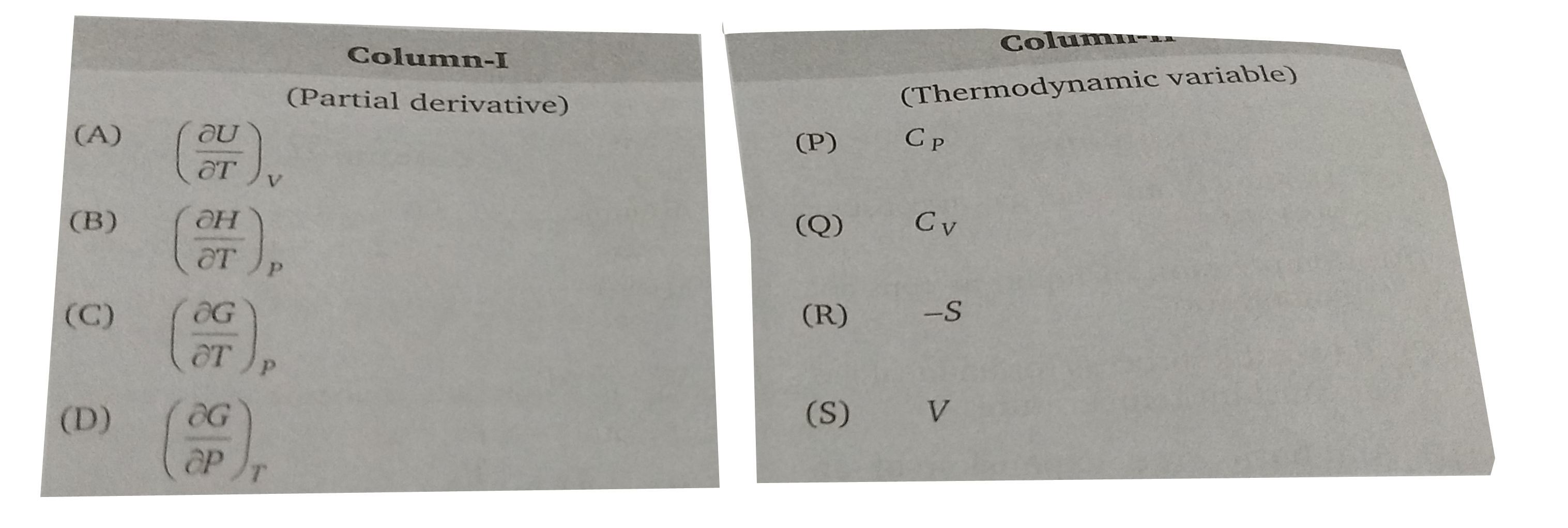N2(g) reacts with H2(g) in either of the following ways depending upon supply of H2(g) :
N2(g)+H2(g)→N2H2(l)
N2(g)+2H2(g)→N2H4(g)
If 5 L N2(g) and 3 L H2(g) are taken initially (at same temperature and pressure ), calculate the contraction in volume after the reaction (in L ).Solution in Telugu
The correct Answer is:6
Step by step video & image solution for N_(2)(g) reacts with H_(2)(g) in either of the following ways depending upon supply of H_(2)(g) : N_(2)(g)+H_(2)(g) to N_(2)H_(2)(l) N_(2)(g)+2H_(2)(g) to N_(2)H_(4)(g) If 5 L N_(2)(g) and 3 L H_(2)(g) are taken initially (at same temperature and pressure ), calculate the contraction in volume after the reaction (in L ). by Chemistry experts to help you in doubts & scoring excellent marks in Class 11 exams.
Updated on:21/07/2023Topper's Solved these Questions
- STOICHIOMETRYBOOK - NARENDRA AWASTHICHAPTER - STOICHIOMETRYEXERCISE - Level 3 - Assertion - Reason Type Questions
15 Videos
- SOLID STATEBOOK - NARENDRA AWASTHICHAPTER - SOLID STATEEXERCISE - Level 3 - Subjective Problems
1 Videos
- THERMODYNAMICSBOOK - NARENDRA AWASTHICHAPTER - THERMODYNAMICSEXERCISE - Level 3 - Match The Column
2 Videos
Similar Questions
STATEMENTS-1 : Specific gravity is dimensionless.
STATEMENTS-2 : Specific gravity is density of a substance measured w.r.t. density of water at 4∘C.
View SolutionIonic solid Na+A− crystallise in rock salt type structure . 2.592 gm of ionic solid salt NaA dissolved in water to make 2 litre solution . The pH of this solution is 8. If distance between cation anion is 300 pm . Calculate the density of ionic solid (Pkw=13 Pka=13)
View SolutionMatch the following columns

View SolutionWhen N_(2)(g) "and" H_(2)(g) are mixed N_(2)H_(4)(g),NH_(3)(g) or both may form, depending upon the relative amount of N_(2) and H_(2) taken. If initial mols of N_(2), H_(2) are x,y and final moles of N_(2)H_(4),NH_(3) are z,v, then the correct options from the following in order of (x,y,z,v) is/are
View SolutionFor the reaction,
N2H4(l)→N2(g)+2H2(g)ΔH∘=−50.6kJ.
This reaction is:
View SolutionDetermine enthalpy of formation for H2O2(l), using the listed enthalpies of reaction :
N2H4(l)+2H2O2(l)→N2(g)+4H2O(l),
ΔrH∘1=−818kJ/mol
N2H4(l)+O2(g)→N2(g)+2H2O(l)
ΔrH∘2=−622kJ/mol
H2(g)+12O2(g)→H2O(l) ΔrH∘3=−285kJ/mol
View SolutionN_(2) (g) reacts with H_(2) (g) in either of the following ways depending upon supply of H_(2) (g) : N_(2)(g)+H_(2)(g) to N_(2)H_(2)(l) N_(2)(g)+2H_(2)(g) to N_(2)H_(4) (g) If 5 L N_(2) (g) and 3 L H_(2) (g) are taken initially (at same temperature and pressure ), calculate the contraction in valume after the reaction (in L ).
View SolutionConsider the reaction : 2H_(2)(g)+2NO(g)rarrN_(2)(g)+2H_(2)(g) The rate law for this reaction is : Rate = k[H_(2)][NO]^(2) Under what conditions could these steps represent mechanism? {:("Step 1:",2NO(g)hArrN_(2)O_(2)(g)),("Step 2:",N_(2)O_(2)+H_(2)rarrN_(2)O+H_(2)O),("Step 3:",N_(2)O+H_(2)rarrH_(2)O+N_(2)):}
View SolutionDetermine enthalpy of formation for H_(2)O_(2)(l) , using the listed enthalpies of reactions: N_(2)H_(4)(l) + 2H_(2)O_(2)(l) rarr N_(2)(g) + 4H_(2)O(l), Delta_(r)H_(1)^(@) =-818 KJ//"mol" N_(2)H_(4)(l)+O_(2)(g) rarr N_(2)(g) + 2H_(2)O(l), Delta_(r)H_(2)^(@)=-622 KJ//"mol" H_(2)(g)+(1)/(2)O_(2)(g) rarr H_(2)O(l), Delta_(r)H_(3)^(@)=-285 KJ//"mol"
View SolutionThe rate law for the reaction 2H_(2(g))+2NO_((g)) to N_(2(g))+2H_(2)O_((g)) is given by rate =-=k[H_(2)][NO]^(2) The reaction occurs in the following two steps: (a) H_(2(g))+2NO_((g)) to N_(2)O_((g))_H_(2)O_((g)) N_(2)O_((g))+ H_(2(g)) to N_(2(g))+H_(2)O_((g)) What is the rate of N_(2)O in the mechanism ? What is the molecularity of each of the elementary stpes ?
View SolutionNitric oxide reacts withH2 according to the reaction
2NO(g)+2H2(g)→N2(g)+2H2O(g)
What is the relationship among
d[NO]dt=d[H2]dt=d[N2]dt and d[H2O]dt?
View Solution5g H_(2) is allowed to react with 14 g N_(2) for the following reaction. N_(2)(g)+3H_(2)(g)rarr2NH_(3)(g) What mass of H_(2) will be left unreached at the end of reaction?
View Solution2N_(2)H_(4)(g)+N_(2)O_(4)(g)rarr3N_(2)(g)+4H_(2)O(g) If N_(2)H_(4)(g) disappears at a rate of 0.12 mol L min, at what rate does N_(2)(g) appear?
View SolutionConsider this reaction,
2H2(g)+2NO(g)→N2(g)+2H2O(g)
The rate law for this for reaction is rate =k[H2][NO]2 .
Under what conditions could these Steps represent the mechanism?
Step1: 2NO→N2O2
Step2: N2O2+H2→N2O+H2O
Step3:N2O+H2→N2+H2O
View SolutionThe formation of ammonia from N2(g) and H2(g) is a reversible reaction
N2(g)+3H2(g)⇔2NH3(g)+Heat
What is the effect of increase of temperature on this equilibrium reaction
View SolutionSuggest four ways in which the concentration of hydrazine, N2H4, could be increased in an equilibrium described by the equation.
N2(g)+2H2(g)⇔N2H(g)ΔH=95kJ
View Solution
